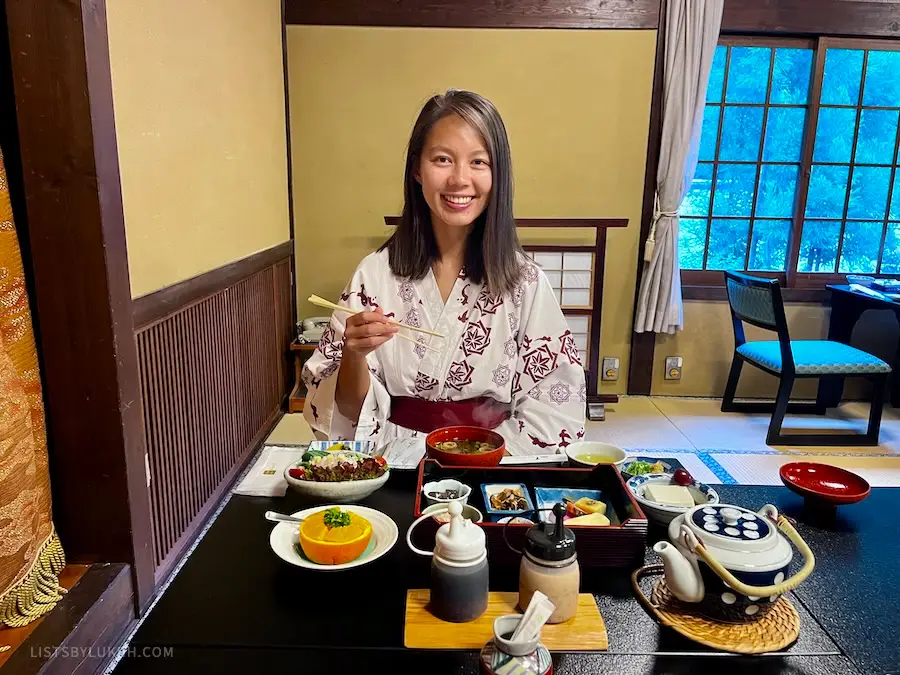| 💰 Trip Cost | Average |
|---|---|
| 💵 Typical Budget | $70-$160/day |
| 🍀 My Budget | $145/day |
| ✈️ Trip Total | $2,033 |
| 🗓️ Trip Length | 2 weeks |
Lists By Lukiih is readers-supported. When you buy with my affiliate link, I may earn a small commission. Thanks!
Is Japan Affordable To Travel To?
Japan is a moderately priced destination worldwide but one of the most expensive destinations in Asia. It’s often considered a luxury destination in the region.
- Japan has a high cost of living with expensive accommodations, even if you opt for budget or capsule hotels.
- The country’s train system is world-class and the bullet train is amazing but very expensive.
- While Japan has cheap dining options like ramen and conveyer-belt sushi, it can’t beat many prices in Southeast Asian countries.
- Many temples have small entrance fees, but there are also a lot of attractions with higher costs.
For comparison, here’s my daily budget for destinations in Asia:
| Destination | My Budget |
|---|---|
| 🇯🇵 Japan | $145 |
| 🇰🇭 Cambodia | $123* |
| 🇸🇬 Singapore | $122 |
| 🇹🇼 Taiwan | $102 |
| 🇻🇳 Vietnam | $89 |
| 🇹🇭 Thailand | $77 |
*My Cambodia daily budget is high because I splurged on accommodation.
💰 What I Spent Traveling to 21 Destinations (2025 Update)
About My Trip
To give context to the expenses below, here’s what you need to know about my trip:
- I spent 2 weeks in Japan, visiting Tokyo, Osaka, Kyoto, Mt. Fuji, and Shimanami Kaido.
- My trip was in September, during the start of the high season, when things are more expensive.
- I traveled with another person, which allowed us to split costs like housing.
- I’m a mid-range budget traveler. I don’t aim to travel on a budget, but I’m intentional about my spending.
- I finance my trips and don’t receive sponsorship.
- All expenses are per person and in US dollars, converted from the Japanese yen.
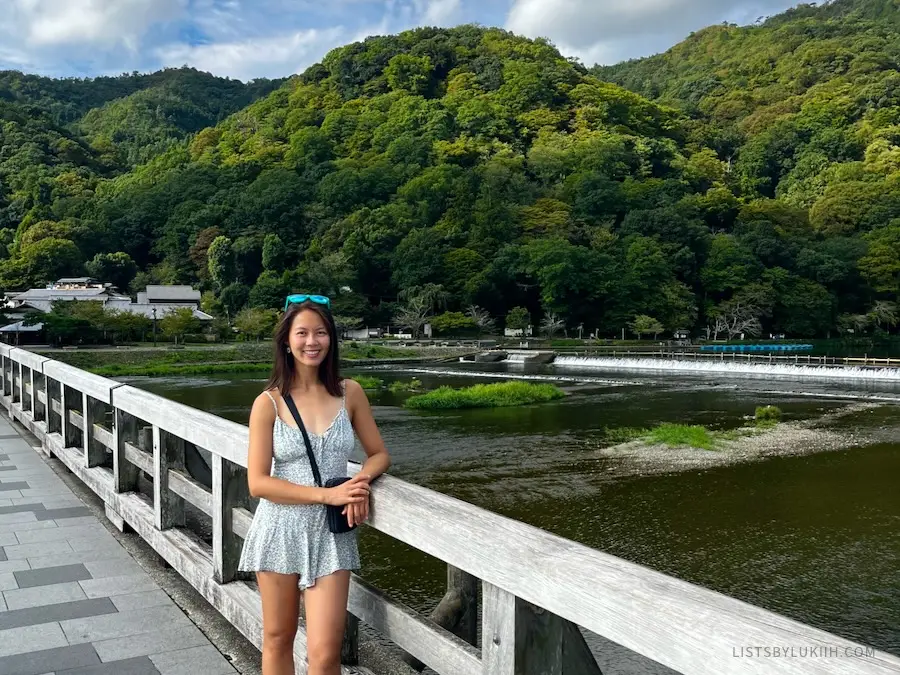
🇯🇵 Planning a Trip to Japan: 12 Practical Things To Know
Total Cost
- $2,829
- $2,033
- $145
A mid-range budget traveler can expect to spend $110–$160 per day in Japan.
Budget Breakdown
Here’s a breakdown of my expenses by travel category:
| Category | Cost | % of Total | Daily Budget |
|---|---|---|---|
| ✈️ Flights | $796 | 28% | – |
| 🏠 Accommodation | $807 | 29% | $58 |
| 🍣 Food | $489 | 17% | $35 |
| 🚆 Transportation | $374 | 13% | $27 |
| ⛩️ Entertainment | $155 | 6% | $11 |
| 🛍️ Shopping | $208 | 7% | $15 |
| Total | $2,829 | 100% | $145 |
Flight Cost
- $398 (round-trip flight from US’s west coast to Tokyo’s Haneda airport)
A round-trip flight between the US and Japan costing under $800 is considered cheap, as international flights typically cost between $850 and $1,500.
Accommodation Cost
- $807
- $58
The accommodations I stayed at:
| Accommodation | Total Cost | Cost per Night |
|---|---|---|
| Kyoto ryokan | $268 | $268 |
| Kyoto hotel | $96 | $48 |
| Tokyo hotel (Nihonbashi) | $179 | $36 |
| Tokyo hotel (Shinjuku) | $37 | $37 |
| Mt. Fuji hut | $64 | $64 |
| Mt. Fuji hotel | $37 | $37 |
| Onomichi hotel | $96 | $96 |
| Imabari hotel | $30 | $30 |
My accommodation budgeting tips:
- Be prepared to pay at least $15 a night – Stay in a dorm-style hostel for about $30 a night in big cities like Tokyo. You can find hostels for closer to $15 a night in more remote areas. If you want more privacy, consider staying at a capsule hotel, where you can rent an enclosed bed for less than $40 a night.
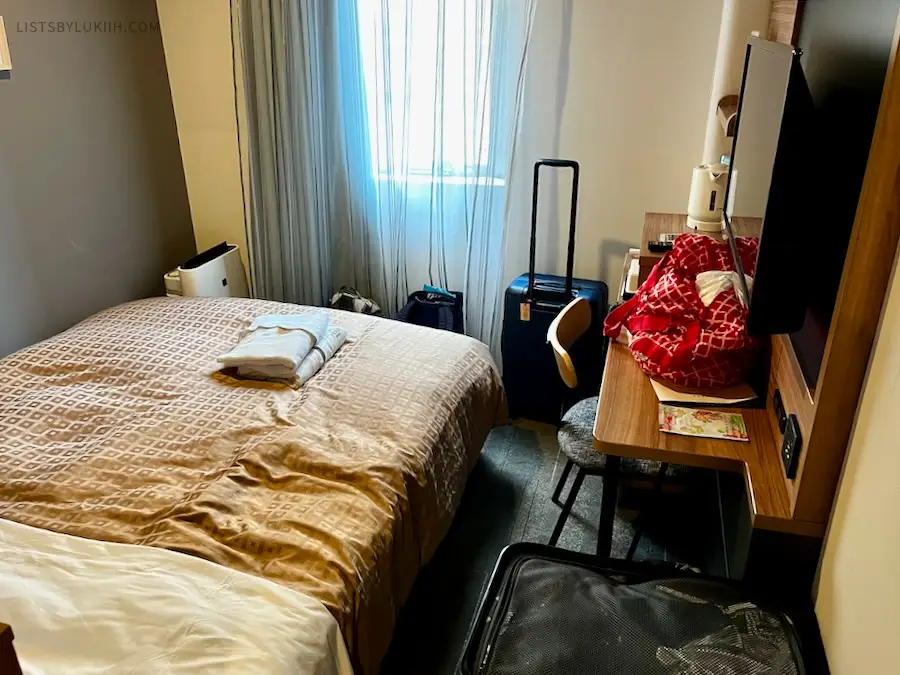
- Stay in non-central areas – While accommodations in Japan can be affordable in non-central areas, expect to pay $70 for mid-range hotel rooms in central areas of Tokyo, Kyoto, and Osaka.
- If you have high budget, stay at a ryokan – Luxury hotels in major cities will be as high as $900, but I recommend staying in a ryokan if you have a higher budget. A ryokan is a traditional Japanese inn that offers an immersive cultural experience and has things like tatami mat floors, sliding paper doors, and onsen (hot spring baths). A standard one starts at $150.
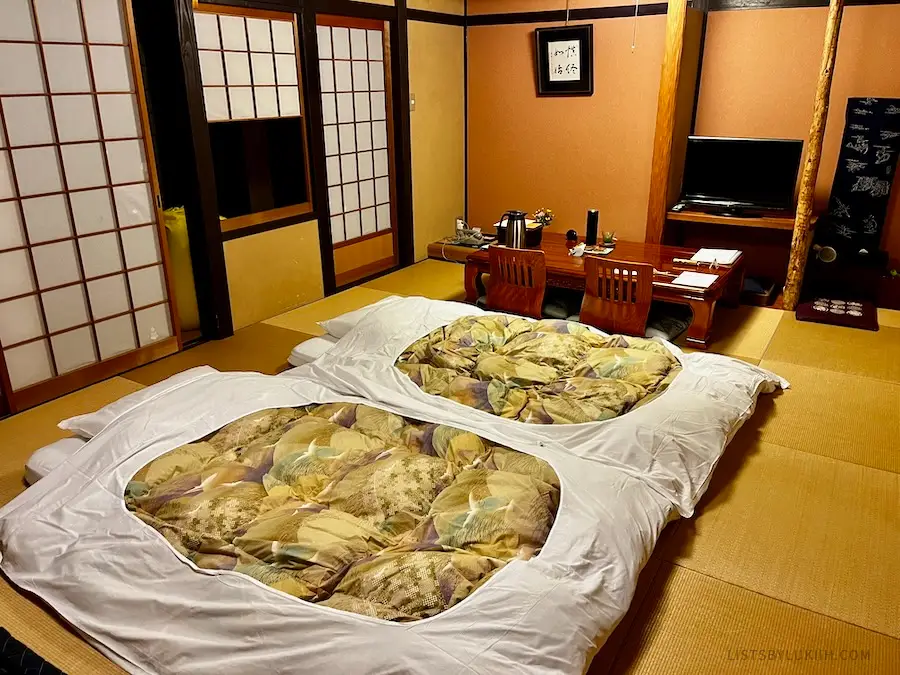
Food Cost
- $489
- $35
My most affordable meals:
| Meal | Location | Cost |
|---|---|---|
| Onigiri and a latte | 7-Eleven (Tokyo) | $1.50 |
| Udon with miso soup | Nakau – Shichijo Shimmachi (Kyoto) | $3 |
| Octopus gyudon rice bowl | Chidori Shokudo (Ikuchi Island) | $10 |
My most expensive meals:
| Meal | Location | Cost |
|---|---|---|
| Premium beef shabu shabu | Gyū Kimura (Kyoto) | $52 |
| Premium beef yakiniku | Arakawa (Kyoto) | $43 |
| Multi-course tofu set | Okutan Nanzenji (Kyoto) | $23 |
My food budgeting tips:
- Eat at convenience stores – If you’re on a budget, you can eat Japanese food for $3 to $10 at convenience stores (Family Mart, 7-Eleven, and Lawson), street food markets, and fast food restaurants where you sometimes order at a machine resembling a vending machine. Unlike the places in the US, food from these places is actually quite good.
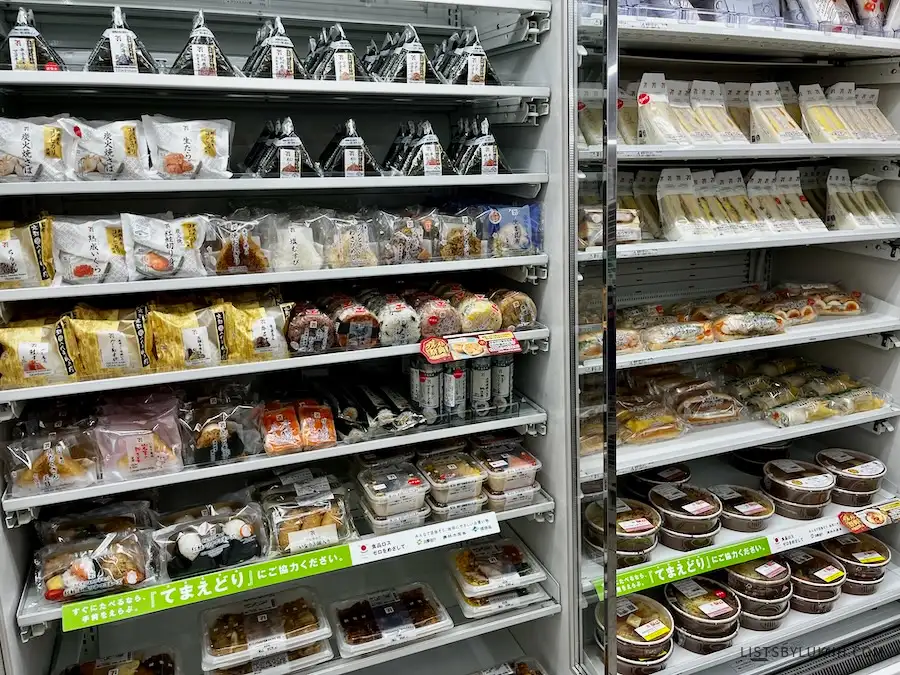
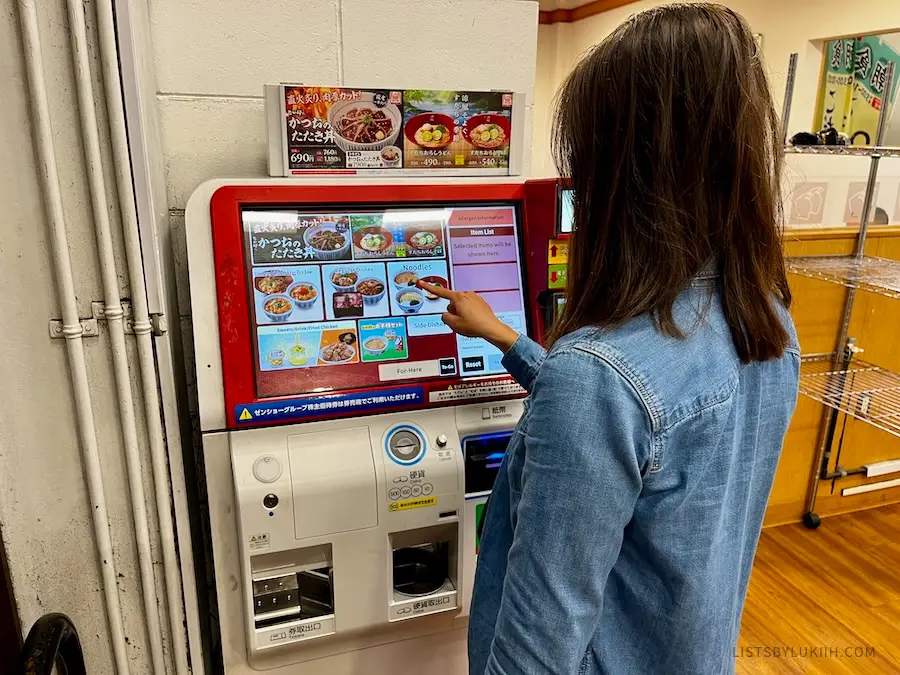
If you buy a refrigerated meal, like gyudon, ramen, or pasta, they will warm it up for you and provide utensils.
- Visit markets – Markets, like the popular Nishiki Market in Kyoto and the Kuromon Ichiba Market in Osaka, are cheap places to try a wide variety of good food for less than $12, as each stall sells $1 to $3 snack-bite food.
- Try conveyor belt sushi – Conveyor belt sushi restaurants are a good deal if you’re craving seafood. I ate at one in Shinjuku, a central location in Tokyo, for $13.
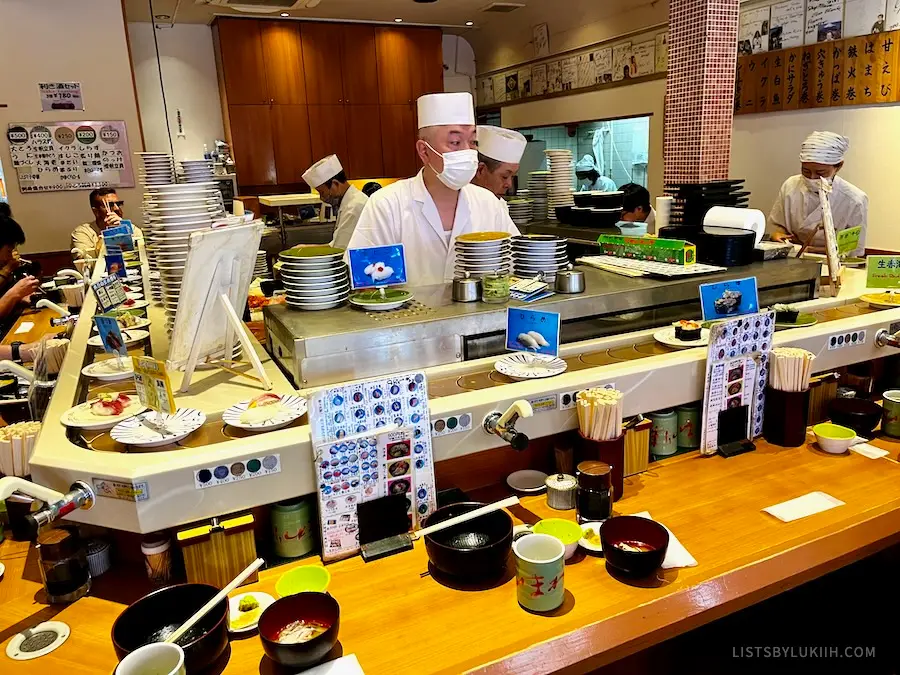
- Don’t fruits from groceries – You’ll notice that fresh fruits in Japan can be very expensive (e.g., over $15 for a handful of grapes) because fruits hold more significance in Japanese culture. But if you go to local supermarkets, you can buy them for reasonable prices.
Transportation Cost
- $374
- $26
The transportation I used:
| Transportation | My Cost | 2025 Price Update |
|---|---|---|
| Japan Rail Pass (7-day pass) | $232 | $330 |
| Bike rental (2 days) | $41 | Same |
| Train tickets & day passes | $40 | Same |
| Bus tickets to Mt. Fuji | $16 | Same |
| Luggage shipping | $15 | Same |
| Coin-operated luggage storage (4x) | $12 | Same |
| Uber/Taxi in Kyoto (2 rides) | $9 | Same |
| Bus from Haneda Airport to Tokyo | $9 | $10 |
My transportation budgeting tips:
- Get the Tokyo Day Pass – Some local transportation, like Tokyo’s local trains, offers a cheap day pass that is usually cost-efficient if you take the train more than three times within 24 hours.
- Calculate the tradeoffs of getting the JR Pass – JR, the same group that operates all the bullet trains (called Shinkansen), serves many of Japan’s trains. The JR Pass is expensive, so you should know your rough Japan itinerary before purchasing it. That way, you can evaluate whether it’s worth it. I got the 7-day JR Pass for my Japan itinerary because it was cheaper than buying individual rides.
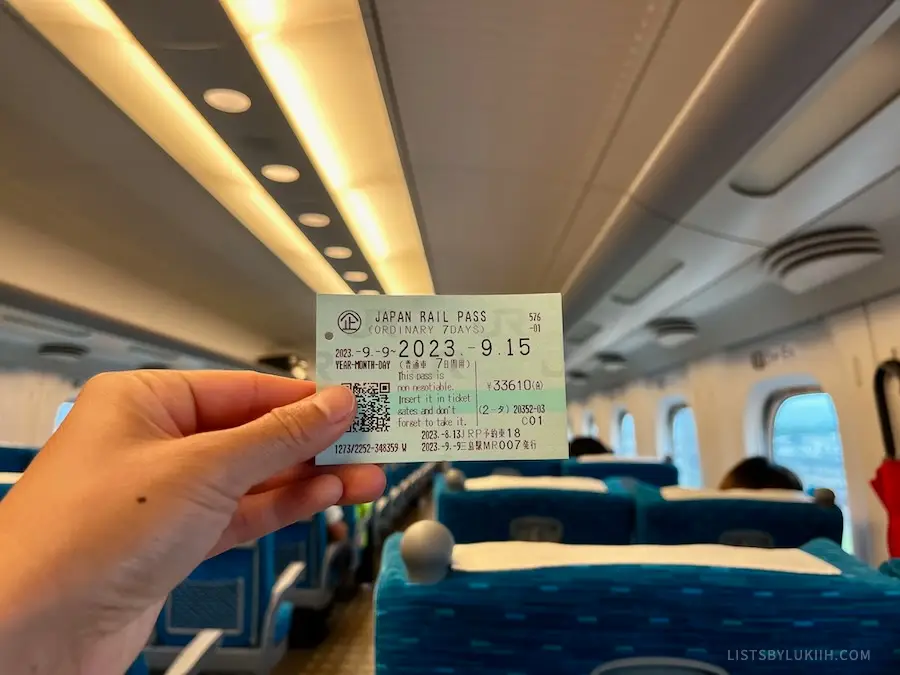
- IC cards can make things more convenient – You’ll notice that many places in Japan, including public transportation, convenience stores, restaurants, and vending machines, will accept IC cards like PASMO and Suica. An IC card is a rechargeable travel card that you can get to make navigating Japan easier.
- Take advantage of the coin-operated storage – When figuring out transportation, know that many of Japan’s train stations have coin-operated luggage storage that is cheap and convenient. It typically costs less than $5 for 24-hour storage. As the name implies, they are sometimes cash-only and need exact change. Train station attendants can give you change for larger bills.
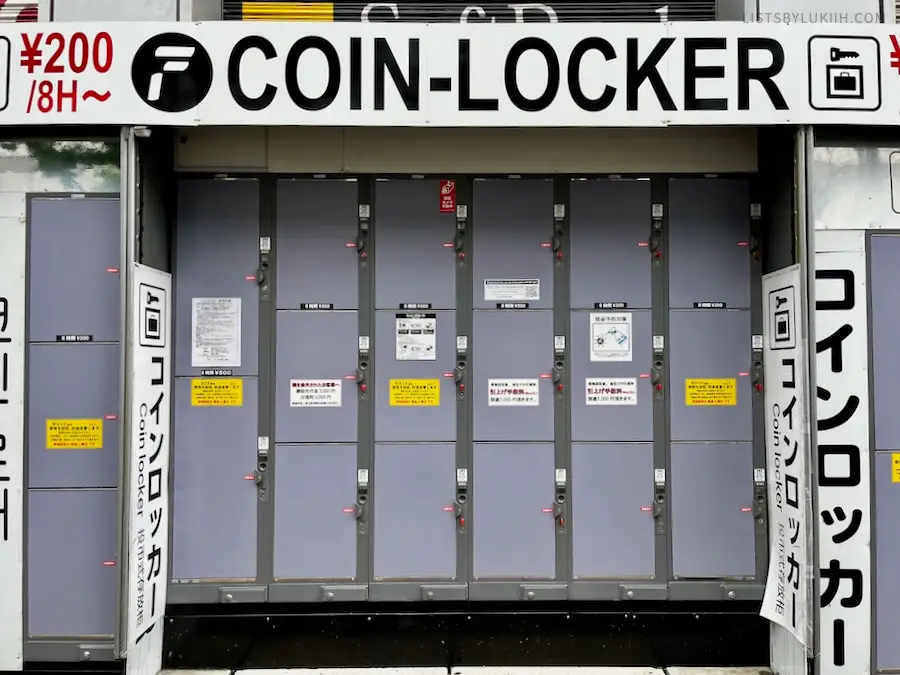
Entertainment Cost
- $155
- $11
The activities/attractions I did:
| Experience | Location | My Cost |
|---|---|---|
| 🌋 Mt. Fuji Hike Entrance Fee | Yamanashi | $10 |
| ⛩️ Fushimi Inari Taisha | Kyoto | Free |
| 🚲 Shimanami Kaido Cycling Rentals | Hiroshima | $40 |
| 🎋 Arashiyama Park Sagano Romantic Train | Kyoto | $12 |
| 🌱 Shinjuku Gyoen National Garden | Tokyo | $3 |
| 🐠 Osaka Aquarium Kaiyukan | Osaka | $18 |
| 🚶🏻♀️ Philosopher’s Path | Kyoto | Free |
| 🚦 Shibuya Scramble | Tokyo | Free |
| 💆♀️ Massages & Misc (2x) | Kyoto & Tokyo | $61 |
| 🎤 Karaoke & Drinks | Tokyo | $20 |
| 🏐 Yoyogi Stadium Olympics Qualifier Volleyball ticket (Tokyo) | Tokyo | $20 |
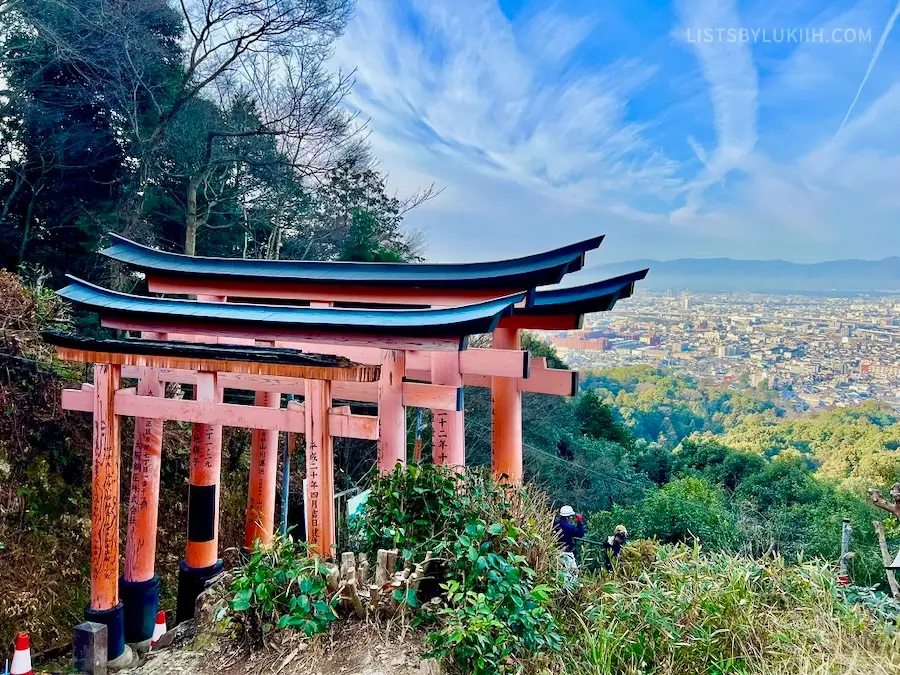
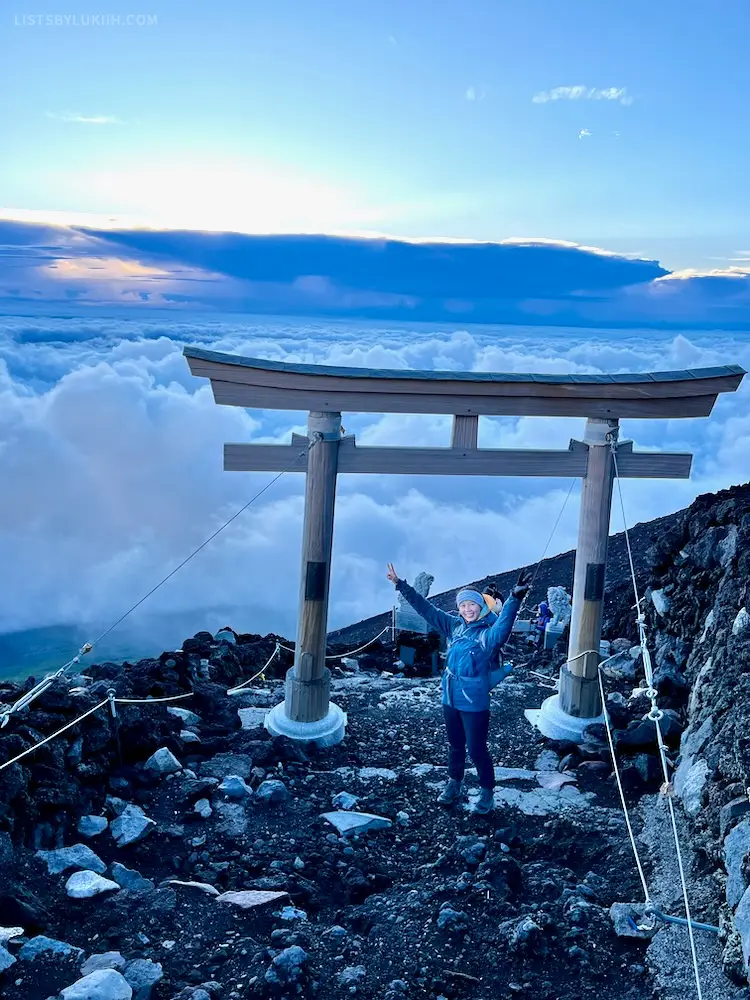
My entertainment budgeting tips:
- Visit the many free attractions – Japan is known for its natural beauty, so there are many free outdoor activities and attractions available. Tokyo has tranquil and beautiful urban parks, including Yoyogi Park and Shinjuku Central Park.
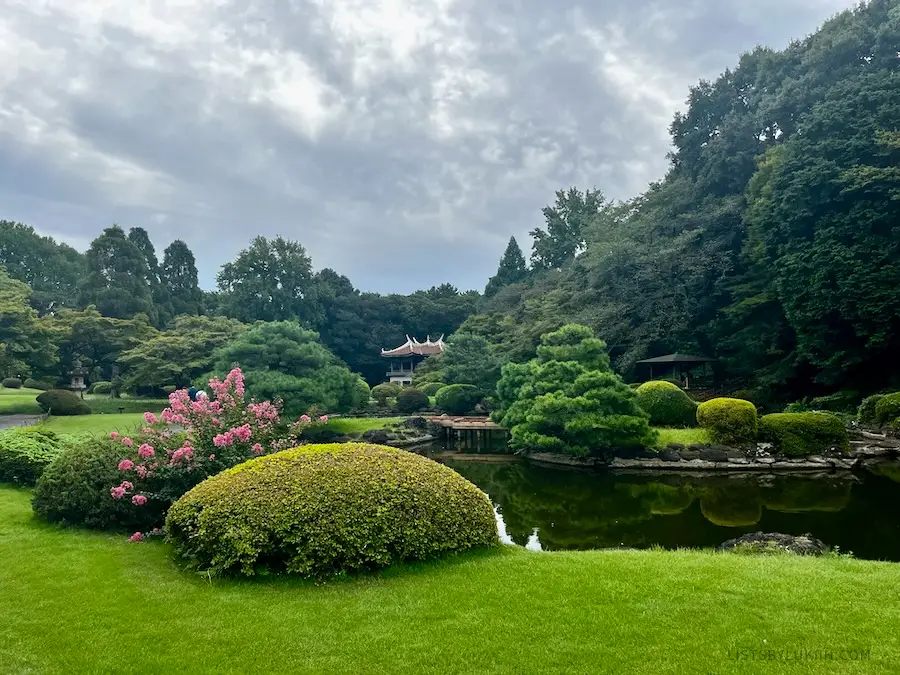
- Opt for alternative attractions – There are also alternative free or cheap attractions. For example, Shibuya Sky is a popular sunset observation deck in Tokyo, but you can save $15 by going to the deck on the 45th floor of the government building instead. Many of Kyoto’s smaller and less well-known temples in the Arashiyama district and Philosopher’s Path are free.
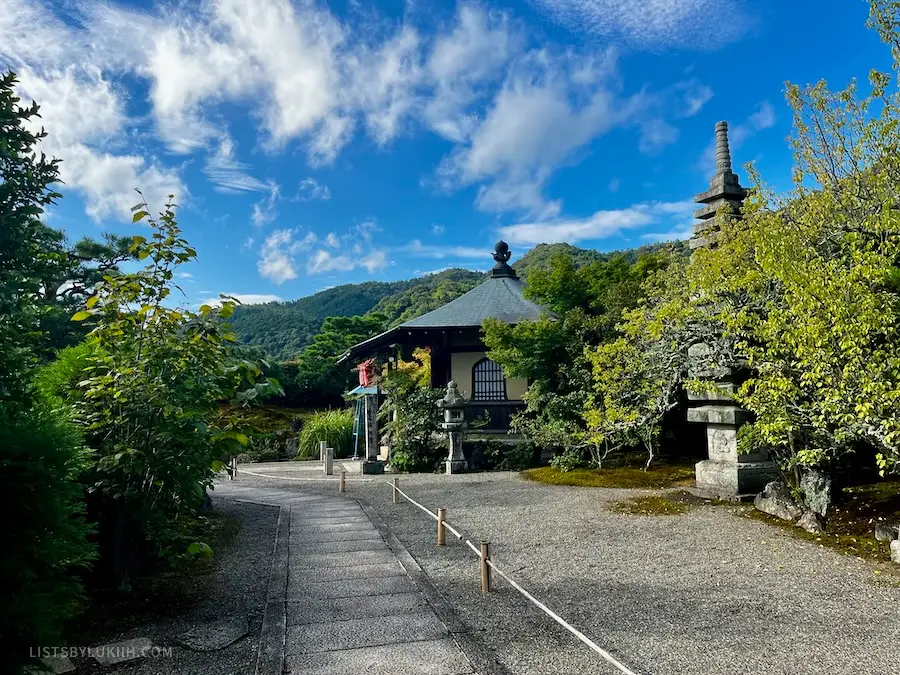
🏆 My Ratings for Japan’s Attractions
Cost Breakdown by Destination
Below are my trip expense breakdowns for the places I visited during my trip.
Tokyo
- 6 days
- $594
- $99
Tokyo is Japan’s most expensive city, with high accommodation and transportation costs. However, it also offers many free attractions and neighborhoods to explore.
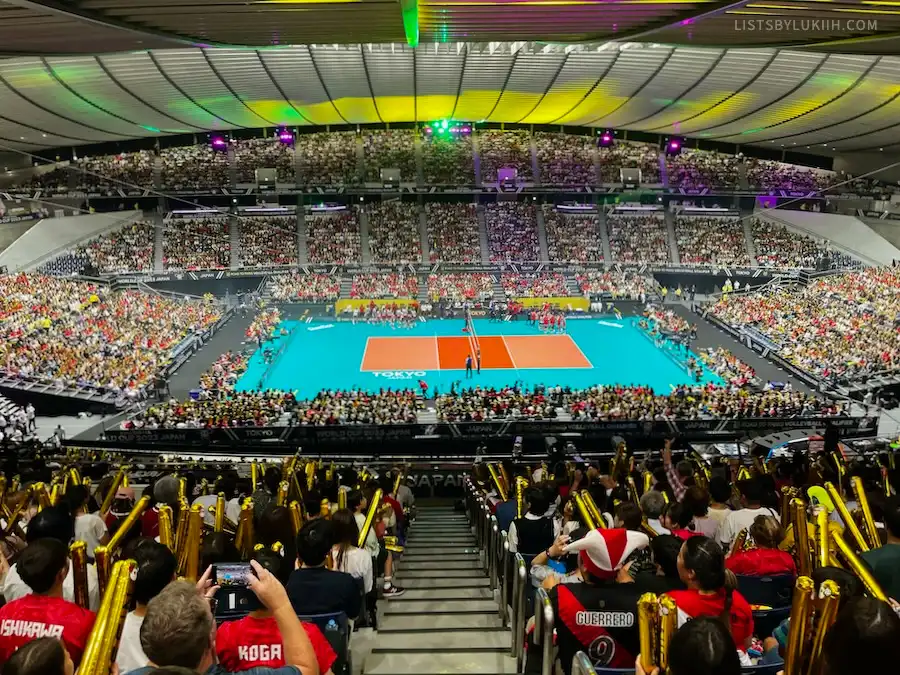
Kyoto
- 2 days
- $616
- $308
Kyoto is another one of Japan’s most expensive places to visit, especially if you plan to stay at a ryokan. The city is known for its well-preserved historical sites. It boasts over 1,600 temples, and all the major or popular ones have a small entrance fee (usually around $5). The city also has many free temples, like the ones found on the Philosopher’s Path or in the Arashiyama district.
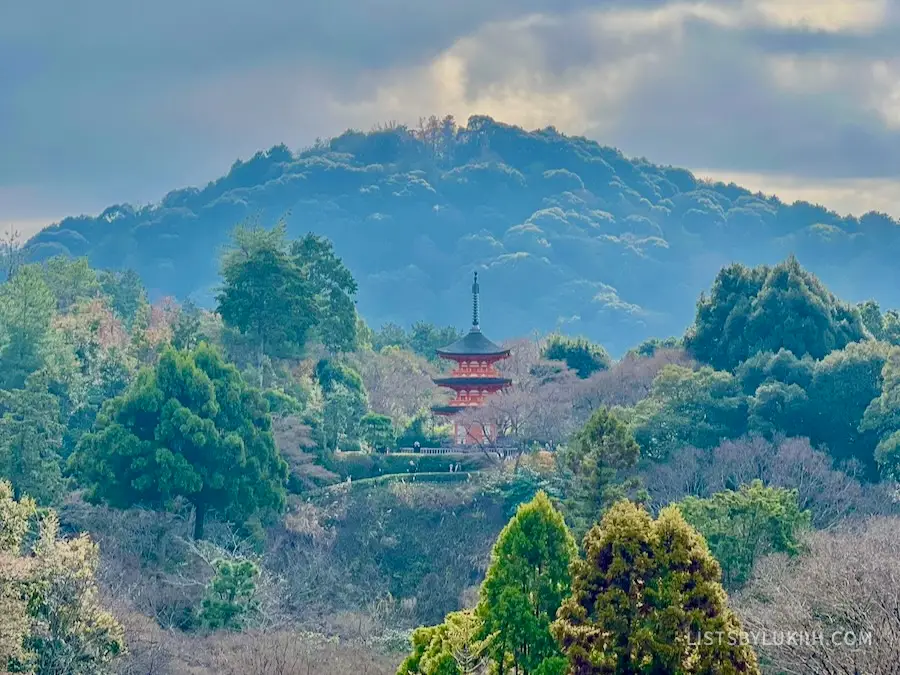
Osaka
- 1 day (day trip)
- $50
Osaka is called “Japan’s Kitchen” and a foodie’s paradise. It’s well-known for its street food, nightlife, and numerous Michelin-starred places, so expect to spend a bit on dining. If you like some guidance, plenty of English-speaking guides offer street food tours.
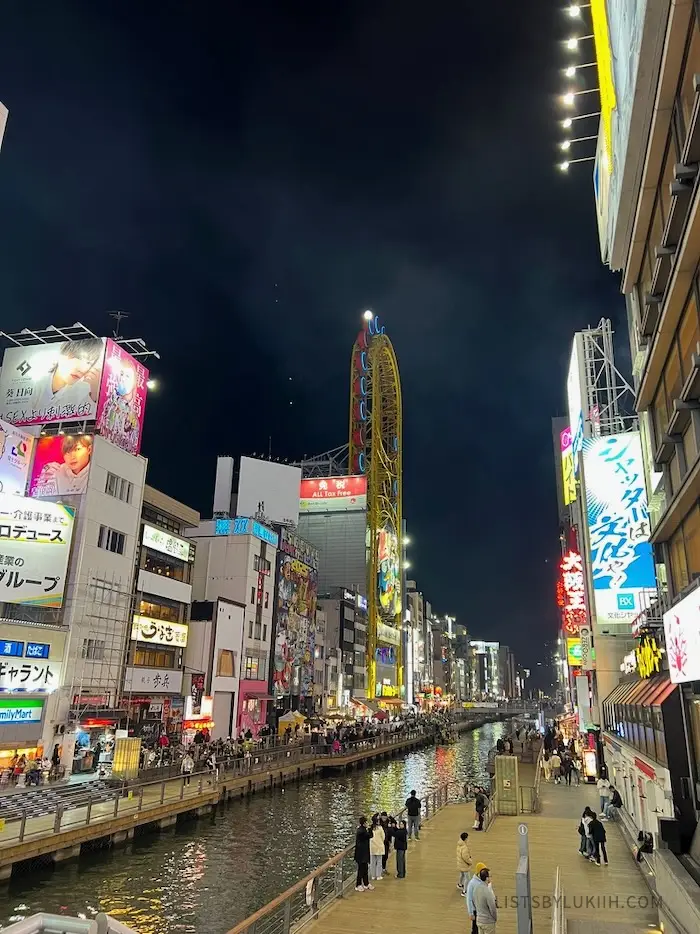
Do You Need Cash?
- Although Japan has a good credit card infrastructure, a significant part of its economy is based on cash transactions. This is especially true once you wander outside its major cities, so make sure to bring some cash.
My tips on using cash:
- Japan’s currency is the Japanese yen (JPY), and the US dollar is not widely accepted.
- Carry about $40 worth of cash per day. I spent ~$200 in cash during my 2-week trip.
- Tipping is NOT customary in Japan. You’ll find that locals will refuse tips even if you offer or insist. In fact, tipping can be considered rude. This is because they feel you’re already sufficiently paying for their service.
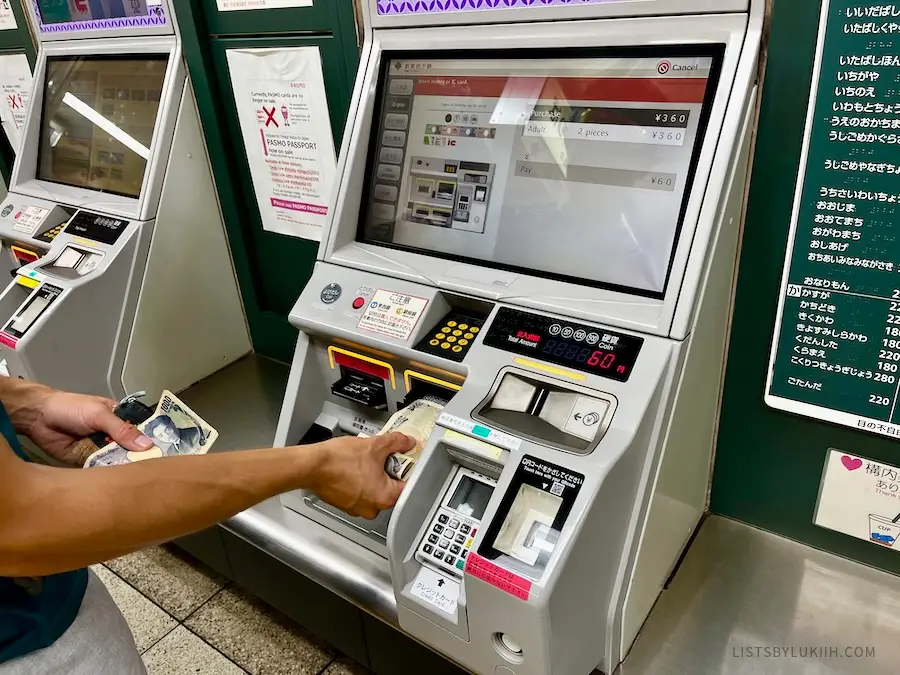
⛩️ 10 Epic Days in Japan: A Unique & Active Itinerary
Japan Trip Planner 2025
Make planning easier with my flexible, research-backed travel planner—shaped by real experience. It has:
- Up-to-date travel info
- A well-curated itinerary
- Practical, firsthand insights & tips
- A simple budget tracker
- A starter packing list
- Fully customizable sections
Built in Notion, this is the tool I personally use to plan every trip. I genuinely love it and creating a Notion account is free.
Lists by Lukiih is a small site I fund myself. Downloading my trip planner is the best way to support me and keep it running—thanks!
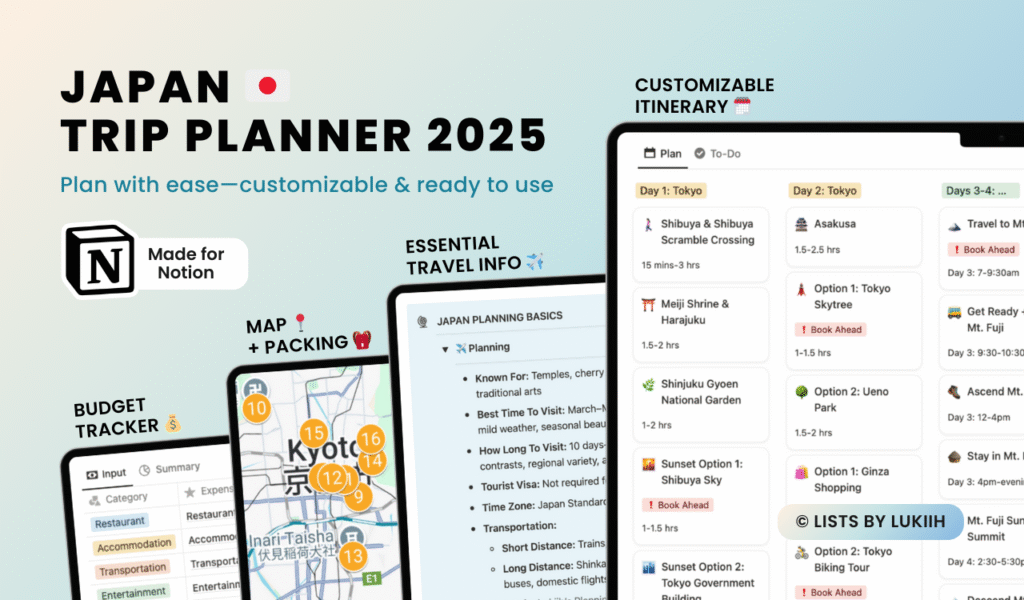
Japan Travel Guides
- 🇯🇵 Planning a Trip to Japan: 12 Practical Things To Know
- ⛩️ 10 Epic Days in Japan: A Unique & Active Itinerary
- 💰 My Japan Trip Cost: Budget Breakdown (2025)
- 🌋 Hiking Mt. Fuji: Honest Review & Tips
- 🚲 Cycling Shimanami Kaido: Honest Review & Tips
- ⛩️ Fushimi Inari Taisha: Honest Review & Tips
- 🙅🏻♀️ Etiquette in Japan: 13 Things Tourists Should Not Do
- ☀️ Visiting Japan in September: Tips & What To Know
- ❄️ Visiting Japan in December: Tips & What To Know
